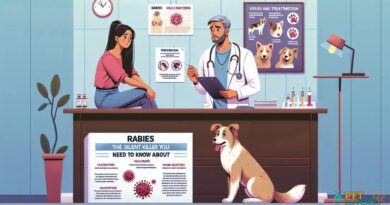What is: Xylitol toxicity signs
What is Xylitol?
Xylitol is a sugar alcohol commonly used as a sweetener in various products, including sugar-free gum, candies, and some baked goods. While it is safe for human consumption, xylitol is extremely toxic to dogs, leading to severe health issues. Understanding the signs of xylitol toxicity is crucial for dog owners to ensure the safety and well-being of their pets.
How Does Xylitol Affect Dogs?
When ingested by dogs, xylitol can cause a rapid release of insulin, resulting in a significant drop in blood sugar levels, known as hypoglycemia. This condition can occur within 10 to 60 minutes after ingestion, making it essential for pet owners to recognize the signs early. The severity of the reaction can depend on the amount consumed and the size of the dog.
Signs of Xylitol Toxicity
One of the first signs of xylitol toxicity in dogs is lethargy. Affected dogs may appear unusually tired or weak, showing little interest in their usual activities. Other early symptoms include vomiting, loss of coordination, and seizures. Recognizing these signs promptly can be life-saving, as immediate veterinary attention is often required.
Vomiting and Diarrhea
Vomiting is a common symptom of xylitol toxicity, often occurring shortly after ingestion. Dogs may also experience diarrhea, which can lead to further dehydration and complications. If you suspect your dog has consumed xylitol, monitor for these gastrointestinal symptoms, as they can indicate a serious reaction.
Loss of Coordination
As xylitol affects a dog’s blood sugar levels, they may exhibit signs of loss of coordination or balance. This can manifest as stumbling, difficulty standing, or an inability to walk straight. If you notice your dog struggling to move normally, it could be a sign of xylitol toxicity that requires immediate veterinary care.
Seizures and Tremors
In severe cases of xylitol toxicity, dogs may experience seizures or tremors. These neurological symptoms indicate a critical drop in blood sugar levels and require urgent medical intervention. If your dog is having seizures, it is vital to seek emergency veterinary assistance without delay.
Coma and Unresponsiveness
In extreme cases, xylitol toxicity can lead to coma or unresponsiveness in dogs. This is a life-threatening situation that necessitates immediate veterinary care. If your dog is unresponsive or appears to be in a deep sleep that cannot be awakened, do not hesitate to contact your veterinarian or an emergency animal clinic.
Preventing Xylitol Toxicity
The best way to protect your dog from xylitol toxicity is through prevention. Always check ingredient labels on food products, especially sugar-free items, to ensure they do not contain xylitol. Educate family members and friends about the dangers of xylitol and keep all products containing this sweetener out of reach of your pets.
What to Do if Your Dog Ingests Xylitol
If you suspect your dog has ingested xylitol, it is crucial to act quickly. Contact your veterinarian or an emergency animal clinic immediately. Provide them with information about the product consumed, the amount ingested, and your dog’s weight. Quick action can significantly improve the prognosis for your pet.




